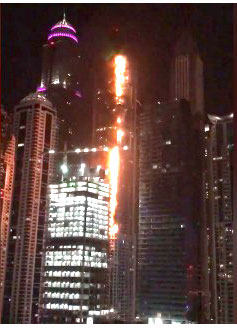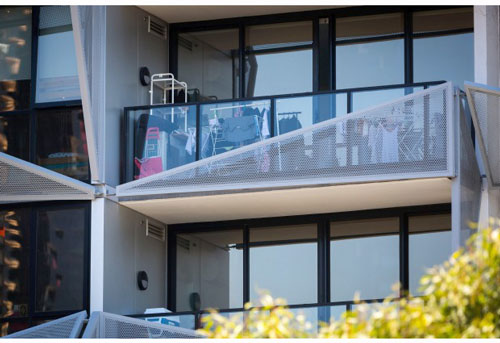Two ways to deal with flammable apartment tower cladding
Australian Financial Review
by Jimmy Thomson
11 August 2017
The Torch building in Dubai went up in flames again last week – the
second fire there in just over two years. A couple of days before,
there was a fire on the upper floors of the nearby Tiger Tower.
The 86-storey Torch – the fifth highest residential building in the
world – has flammable cladding, of course. Closer to home, the Lacrosse
building in Melbourne suffered a similar fire about 18 months ago,
spread by the same materials.
And of course, the Grenfell tragedy in London, where 80 people perished
in the blaze, was the most vivid example of how badly things could go
wrong.
Now individual owners of units in thousands of buildings in Australia
are potentially facing bills of thousands of dollars each to remove and
replace dangerous inflammable cladding.

The Torch Tower in the Marina neighbourhood of Dubai caught fire for the second time last week. @DALIAKAKI
The second Torch fire came just days after NSW Better Regulation
Minister Matt Kean announced a cladding Task Force which will compel
apartment building owners to declare whether or not they have dangerous
cladding.
Strata law requires owners to maintain and repair common property, and
that may well mean they have to remove and replace the material at
their own expense.
Apartment owners thinking they might recoup the costs from building
professionals could be out of luck. According to a story in the
Financial Review this week, many professional indemnity insurers are
excluding cover for certifiers who approved inflammable cladding.
But are you really living in mortal danger if your newish building has cheap cladding on its outside?
Grenfell was different

A cluttered balcony of the Lacrosse tower at 673 La Trobe Street, as photographed in January. Chris Hopkins
The three Dubai fires and the Lacrosse blaze resulted in a total of
zero casualties. OK, several apartments were badly damaged and some
residents were seriously scared – but that was it.
The Grenfell was different. It had no sprinklers, restricted access to
fire stairs and had a non-evacuation policy that told residents it
would be safer to stay in their flats than try to escape a fire.
Also, the Grenfell was a bodgy makeover of an old building. The Torch,
the Tiger and the Lacrosse are modern buildings with functioning
internal fire-fighting systems.
In any case, there's a compelling argument that it's our behaviour
rather than just building materials that's the problem. The first Torch
fire was started by a barbecue on a balcony, and the Tiger and Lacrosse
fires by carelessly discarded cigarettes.

Clothes airing on balconies helped fuel the fire at the Lacrosse building. Supplied
Melbourne Lord Mayor Robert Doyle has already flagged the possibility
that increased safety measures may be all that's required and cladding
replacement is just one option.
So perhaps owners in a building with cheap cladding on the outside,
should consider aggressively banning smoking and barbecues on their
balconies, as well as the storage of anything might fuel a fire.
Also, check your sprinkler systems and make sure your smoke alarms are
all functioning, your fire doors are closed and your fire stairs are
clear.
But if you own in a high fire risk building that turns a blind eye to
bad behaviour, overcrowding and slack fire safety measures, don't be
surprised if you are hit with a massive bill for a cladding cure.
top contents
chapter previous next


